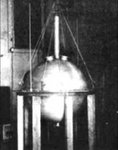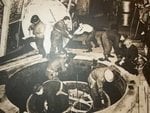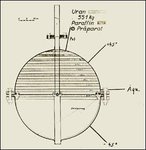westminster said:Evidently, The Germans did build an atomic bomb, likely more than one. Those in the U.S. may wish to contact the National Archives for this document:
A.P.W./U (Ninth Air Force) 96/1945, 373.2 of 19 August 1945, Investigation, Research, Developments and Practical Use of the German Atomic Bomb, Pkts Nos 47 to 53, published by COMNAVEU, 1946.
Also see the book, Critical Mass by Carter Plymton Hydrick. The author shows that the Manhatten Project would not have had enough uranium for the planned drop date of the bombing of Japan, or a working fuze. It contains many supporting documents and indicates the needed uranium came from U-234 which surrendered to the U.S. There is also a reproduction of an article from the New York Times, dated August 26, 1945, which states, in part, "Besides an atomic bomb, on which, as has been made known, the Germans had made considerable progress..." I don't think I need to place any emphasis here. The source of the information was the Office of War Information, based on CIOS (Combined Intelligence Objectives Subcommittee) reports as Intelligence teams swept into Germany and German held territory.
I have read up on this and yes the Germans did build some kind of atomic bomb device but it did not have eneogh explosive power. A nuclear bomb is considered anything over the equivelent of 500 tons of TNT. The German devices had about 475kg which would make it know more then a dirty bomb. There were several of them found in near my hometown near Stuttgart.



